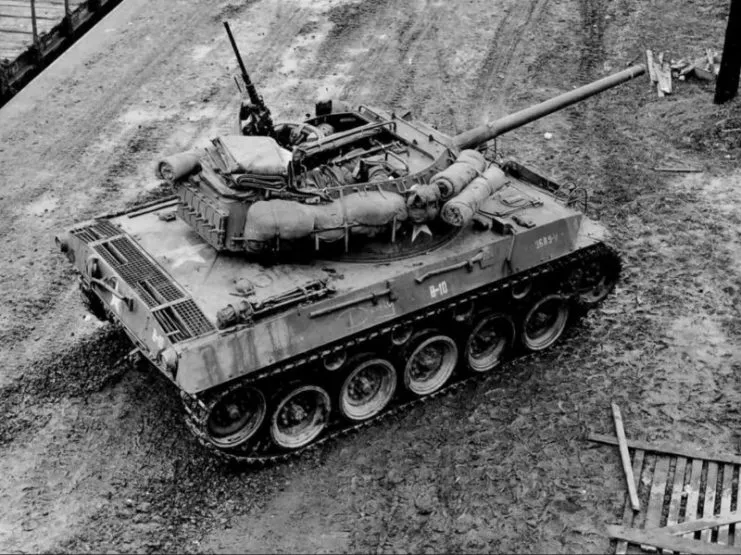
“Although today the Lidice tragedy has been largely overshadowed by the Holocaust; surprisingly, Nazi atrocities against Jews received far less coverage at the time.”
By Jonathan Harrison
IN 1942, the Nazi atrocity that received the most American media attention concerned ethnic Czechs — not Jews.
On June 10, 1942, the German military massacred hundreds of inhabitants of the town of Lidice. The action was a reprisal for the assassination of Obergruppenführer Reinhard Heydrich two weeks earlier. The crime created such an outcry in the United States that one Illinois community actually changed its name to Lidice to honour those slain. Even one-time GOP presidential hopeful Wendell Willkie railed against the slaughter in a speech.

Although today the Lidice tragedy has been largely overshadowed by the Holocaust; surprisingly, Nazi atrocities against Jews received far less coverage at the time. The shooting of more than 50,000 Jews at Babi Yar, Kiev, which is now a central component of Holocaust remembrance, was during the war itself relegated to the inside pages of The New York Times. This reveals an uncomfortable truth about U.S. culture in 1942: Jewish victims of Nazism mattered less than others targeted by Hitler. This would continue to be the case until American troops reached the death camps in the U.S.-occupied zone of Germany three years later.
In June 1942, Lidice was an important moment of escalation. It signified the boundaries the Nazis were prepared to cross. It was one thing for the Third Reich to murder eastern European Jews secretly in enclosed camps or under cover of partisan warfare; it was another thing entirely to brazenly massacre a village full of Christians and leave photographic evidence of the carnage in full view. It was certainly a sign that the Fuehrer was no longer concerned about American public opinion or the prospect of postwar criminal charges. The justification for such recklessness was even phrased by Nazi propaganda minister Dr. Josef Goebbels in a speech on March 2, 1943.
“Experience teaches that a movement and a people who have burned their bridges fight with much greater determination than those who are still able to retreat,” he said.
Despite this, it’s likely the Nazis hadn’t fully anticipated the level of outrage America would exhibit in the wake of the massacre. Lidice showed the level of wrath U.S. press could unleash on the Nazi war machine when it was so inclined. Moreover, the disproportionate prominence the Lidice tragedy enjoyed in western perceptions of Nazi war crimes continued into 1945, when this British newsreel commemorated the third anniversary of the massacre, whilst “The Governors of nine States joined with members of Congress…in calling for the commemoration today of the third anniversary of the destruction of Lidice.”

Why was this signal given when massacres of Jews had been banished to the back pages? Since 1924, U.S. immigration policy had restricted immigration from Poland and the U.S.S.R., implicitly on the grounds that those populations contained persons who were considered not fully civilized, or perhaps not fully white. The antisemitic undertones of the restrictions were clearly understood, as this author notes. To be sure, there were also limits placed on Czechoslovakian immigrants. But sympathy for ethnic Czechs came much more easily to a Christian America. And such solidarity was bolstered in no small part by the fact that the country had been duplicitously annexed by Hitler in 1939, contributing greatly to onset of the war.
It was the role of Americans as camp liberators in 1945 that finally opened the nation to the belief that Jews were the brothers and sisters deserving of sympathy and empathy. It was a long road to full acceptance of Jews in the United States
In 2014, this has led paradoxically to a relative neglect of Lidice anniversaries in the west. The Illinois city of Crest Hill, which had renamed itself Lidice in 1942, has a memorial in the city and a ceremony on the anniversary, such as that held this month. But official presence at state and federal level at these anniversaries clearly does not match that at Holocaust memorials. This neglect is unfortunate on two levels: it is both an overlooking of an important atrocity but also a selective forgetting of America’s wartime double standards.
____________________
Jonathan Harrison teaches Sociology at Florida Gulf Coast University and Hodges University. This article appeared last week on George Mason University’s History News Network. It was reprinted here with permission of the author.










Uh, we do know that the camps and the Final Solution weren’t uncovered until years later when Allied armies overran them? Didn’t you see that scene in “Band of Brothers”? Where the soldiers find a death camp, but have no idea what it is?
Massacres of Jews weren’t banished to the back pages, they were largely unknown. Moreover at the time of the Lidice massacres, the Final Solution had hardly started. Sheesh, I expect better from historical writers.
While the sheer industrial scale of Nazi genocide shocked the world when it was revealed in 1945, reports of German atrocities against Jews were far from unknown to the public in western democracies prior to VE Day. The Third Reich’s persecution of Jews was well known as far back as Kristallnacht (and long before that as well). I believe the author of this piece was trying to shed some light on an aspect of the Holocaust story that may have been overlooked.
How was the Murder of Dresden any better? The Allies committed that murder, and killed enough women and children for 1000 Lidices.
Nazi sympathizers love to talk about Dresden and the RAF as if the Luftwaffe didn’t bomb London for sixty straight days and then Coventry after British children were moved there for safety. Dresden was for Coventry. If you conduct total war, expect total war in return. It burned for a reason.